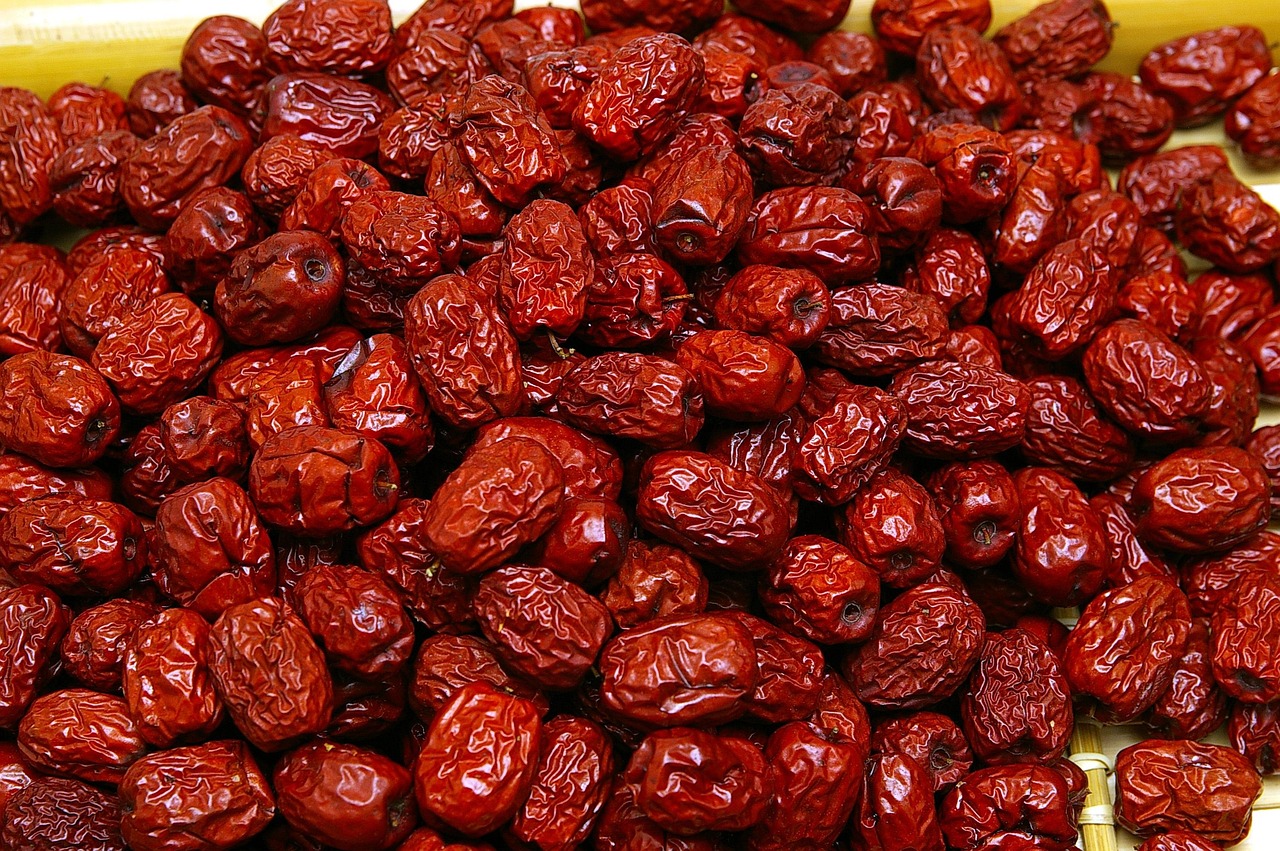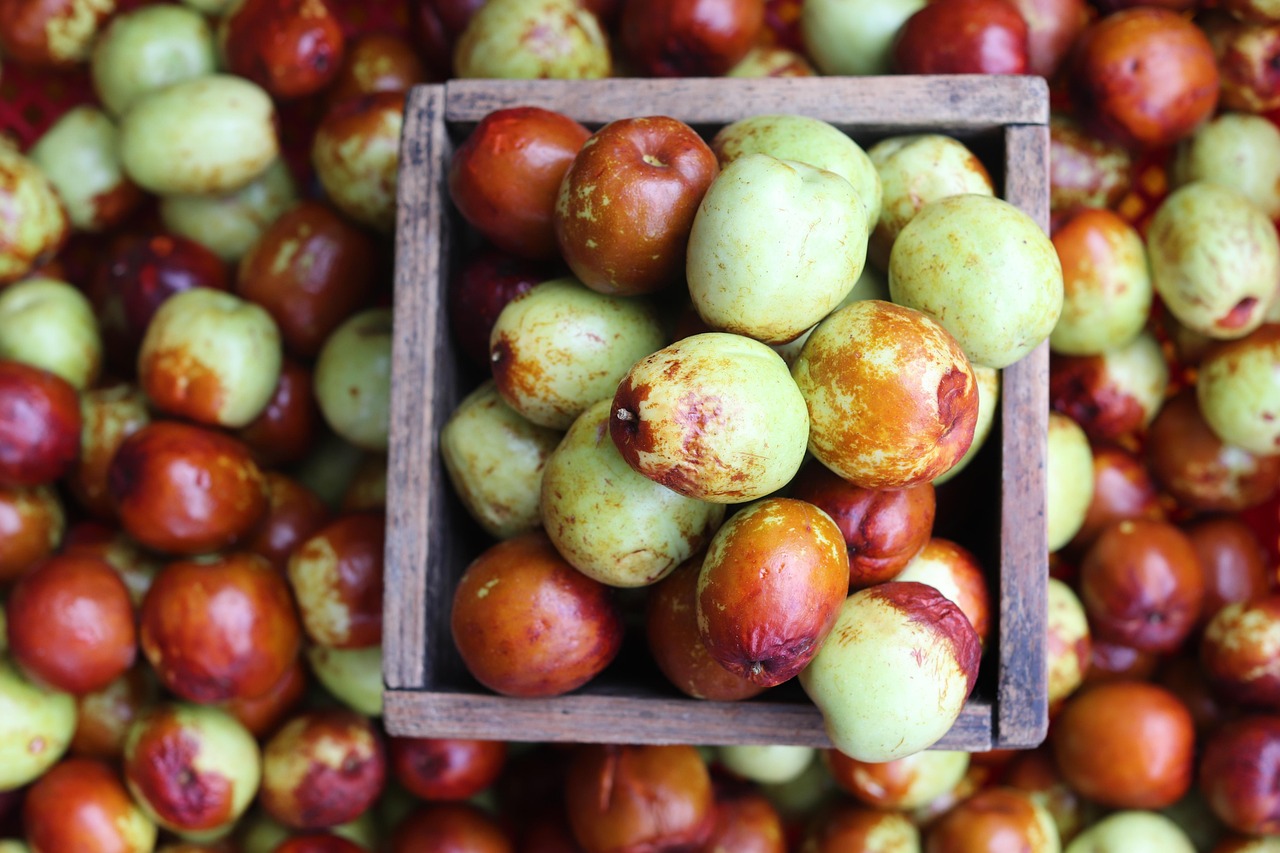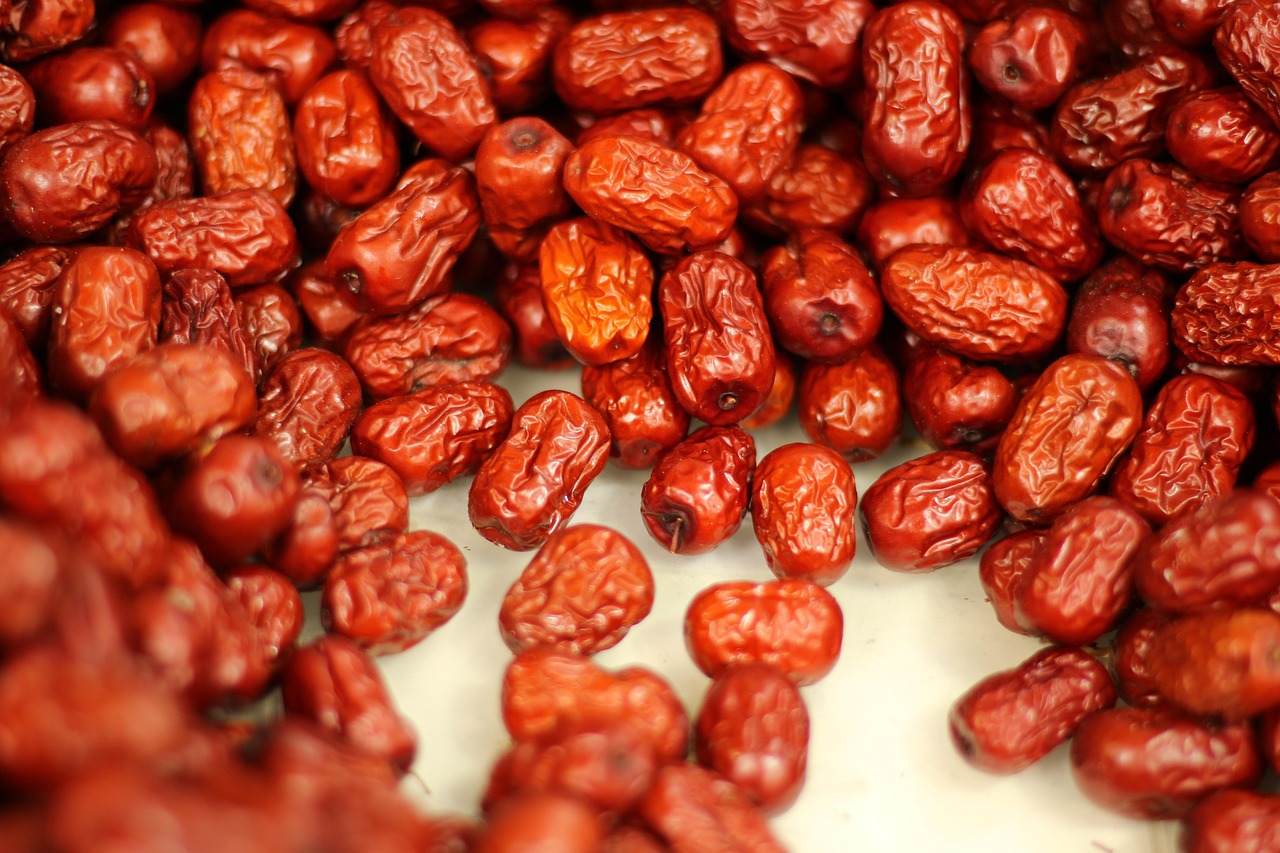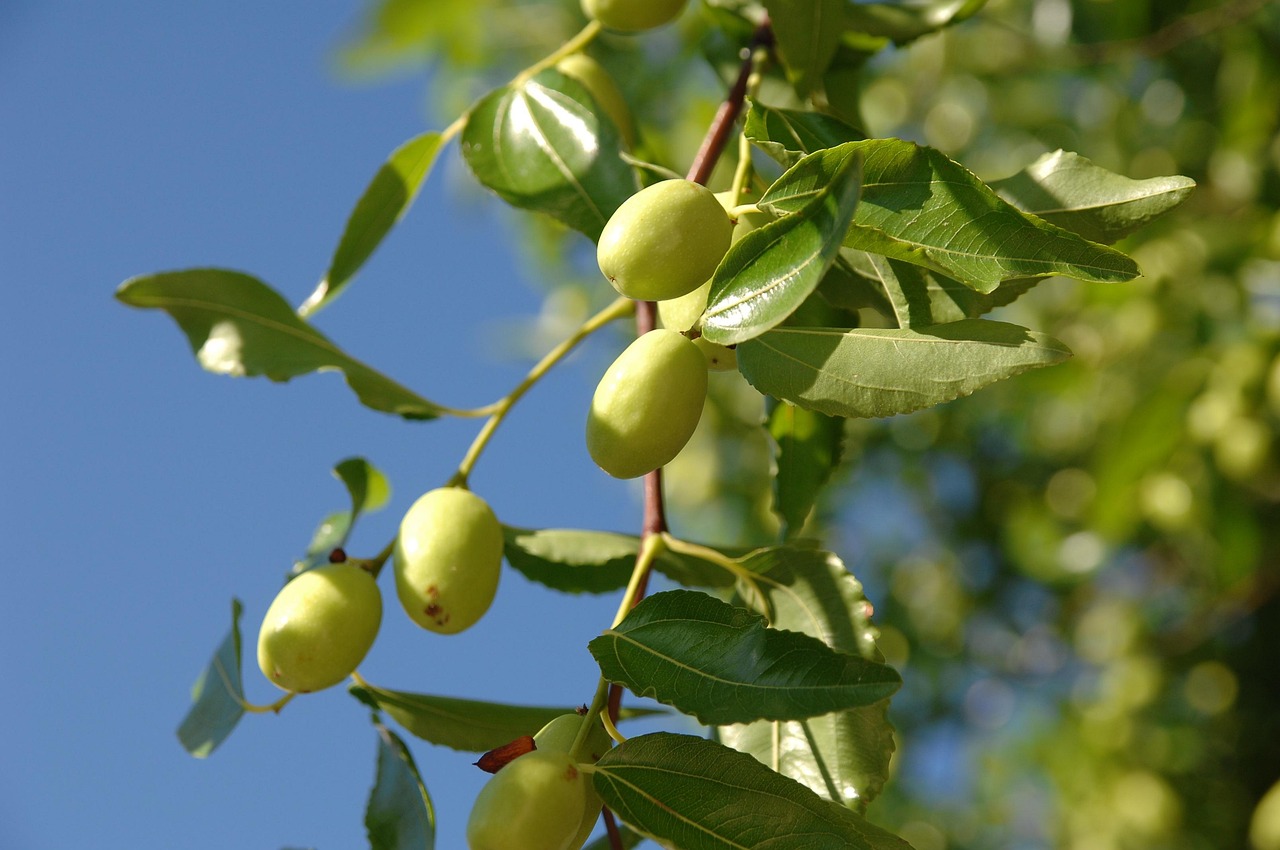The Jujube tree, known for its drought tolerance, typically has a growth rate of 12 to 24 inches per year under optimal conditions. Factors such as soil quality, climate, and care can influence this rate significantly, making it an excellent choice for drought-tolerant fruit orchards.
Understanding the Jujube Tree
The Jujube tree (Ziziphus jujuba) is a deciduous tree native to Asia. It is renowned for its resilience in arid environments and its ability to thrive with minimal water. This tree produces small, sweet fruits that are not only nutritious but also have a rich history in traditional medicine.

As more gardeners and orchardists seek sustainable practices, the Jujube tree stands out. Its rapid growth rate combined with drought tolerance makes it a valuable addition to fruit orchards, especially in regions where water scarcity is a concern.
Growth Characteristics
Jujube trees exhibit several growth characteristics that make them appealing for cultivation. They can reach heights of 15 to 30 feet and have a spreading canopy that can provide shade and protection for other plants in the orchard.
Their root system is extensive yet shallow, allowing them to absorb moisture from light rainfall efficiently. This adaptation is crucial for survival in drought-prone areas. Below are some key growth characteristics of the Jujube tree:

- Height: Typically grows between 15 and 30 feet.
- Width: Spreading canopy can reach up to 25 feet.
- Growth Rate: Average of 12 to 24 inches per year.
- Root System: Shallow but extensive, ideal for drought conditions.
Optimal Growing Conditions
While Jujube trees are hardy and adaptable, they thrive best under specific conditions. Understanding these requirements can help farmers and gardeners maximize their growth potential and fruit yield. Below are some optimal growing conditions for Jujube trees:
| Condition | Optimal Level |
|---|---|
| Soil Type | Well-drained sandy or loamy soil |
| pH Level | 6.0 to 8.0 |
| Sunlight | Full sun (at least 6-8 hours daily) |
| Watering Needs | Minimal; drought-resistant |
In addition to these conditions, Jujube trees require little maintenance once established. They are resistant to many pests and diseases, making them an attractive option for organic farming practices. This resilience contributes significantly to their growth rate and overall success in drought-tolerant fruit orchards.
Impact of Climate on Growth Rate
The climate plays a vital role in the growth rate of Jujube trees. They prefer regions with hot summers and mild winters, which resemble their native habitat. Extreme cold or frost can hinder growth and fruit production.

In areas where temperatures regularly exceed 90°F during the growing season, Jujube trees tend to flourish. However, they can tolerate lower temperatures as long as they are protected from frost during the early spring when new growth begins.
Understanding the local climate is essential for successful cultivation. Orchardists should assess temperature patterns and seasonal rainfall when planning to plant Jujube trees in their orchards.
Cultivation Practices
Proper cultivation practices can enhance the growth rate and productivity of Jujube trees. Here are some recommended practices:

- Planting Time: Early spring or fall is ideal.
- Spacing: Trees should be spaced at least 10-15 feet apart to allow for adequate air circulation.
- Fertilization: Use a balanced fertilizer in the early growing season.
- Pest Management: Regularly inspect for pests and diseases, applying organic treatments as necessary.
By implementing these practices, growers can ensure that their Jujube trees reach their full growth potential while contributing to a sustainable, drought-tolerant fruit orchard. The unique characteristics of this tree make it a favorite among those looking to cultivate resilient crops in challenging climates.
Watering Strategies for Jujube Trees
Even though Jujube trees are drought-tolerant, proper watering strategies during the establishment period are crucial for their long-term growth. The first few years after planting are critical, as the trees develop their root systems. Here are recommended watering strategies:
- Initial Watering: Water deeply immediately after planting to help settle the soil around the roots.
- Frequency: For the first year, water every two weeks during dry spells. Adjust based on rainfall.
- Amount: Ensure that each watering session delivers about 1 to 2 inches of water to reach the root zone effectively.
- Mulching: Apply a layer of mulch around the base of the tree to retain moisture and reduce evaporation.
Signs of Water Stress
Understanding how to identify water stress in Jujube trees can help growers take timely action. Look for the following signs:
- Leaf Curling: Leaves may curl or become crispy at the edges.
- Color Change: Leaves may turn yellow or brown, indicating a lack of water.
- Slow Growth: If a tree’s growth rate slows significantly, it may not be receiving enough moisture.
Pest and Disease Management
While Jujube trees are generally resistant to pests and diseases, they can still be affected by certain issues. Effective management practices will help maintain tree health and optimize growth rates. Here are key pest and disease management strategies:
- Regular Monitoring: Inspect trees regularly for any signs of pests or diseases.
- Beneficial Insects: Encourage natural predators such as ladybugs and lacewings to control pest populations.
- Organic Treatments: Use organic pesticides or neem oil when necessary to combat infestations.
- Sanitation: Remove fallen leaves and debris that may harbor pests or diseases.
Nutrient Requirements for Optimal Growth
Nutrient management is vital for enhancing the growth rate and fruit production of Jujube trees. Here’s a closer look at essential nutrients and how to provide them:
Essential Nutrients
Jujube trees require several key nutrients for healthy growth. The most important include:
| Nutrient | Function | Source |
|---|---|---|
| Nitrogen (N) | Promotes leaf and stem growth. | Organic compost or balanced fertilizers. |
| Phosphorus (P) | Aids in root development and flowering. | Bone meal or rock phosphate. |
| Potassium (K) | Enhances fruit quality and disease resistance. | Kelp meal or greensand. |
| Calcium (Ca) | Strengthens cell walls and improves fruit set. | Lime or gypsum. |
Fertilization Schedule
A well-planned fertilization schedule can significantly improve the growth rate of Jujube trees. Here are some guidelines:
- Early Spring: Apply a balanced fertilizer as new growth begins.
- Mid-Summer: Consider a second application if growth appears slow or leaf color is off.
- Late Fall: A light application of organic matter can help prepare the tree for winter.
Cultivating Multiple Varieties
Diversity in planting can enhance the overall resilience and productivity of fruit orchards. When it comes to Jujube trees, cultivating multiple varieties can provide various benefits:
- Diversity in Fruit: Different varieties produce fruits with varying flavors and textures, appealing to a wider audience.
- Extended Harvest Period: Different varieties may ripen at different times, providing a longer harvest season.
- Pest Resistance: Some varieties may be more resistant to specific pests or diseases, providing natural protection for others.
This approach not only enhances biodiversity within the orchard but also mitigates risks associated with monoculture practices. Selecting compatible Jujube varieties can lead to a thriving, sustainable fruit orchard that capitalizes on the unique strengths of each tree type.
Harvesting and Post-Harvest Handling of Jujube Fruits
Harvesting Jujube fruits at the right time is essential for maximizing flavor, texture, and storage life. Understanding when to harvest and how to handle the fruits after picking can significantly impact the quality of the produce. Below are key considerations for harvesting and post-harvest practices:
Timing for Harvest
Jujube fruits typically reach maturity in late summer to early fall, depending on the variety and local climate conditions. Here are some signs to look for when determining the right time to harvest:
- Color Change: Mature Jujube fruits change from green to a brown or reddish-brown color.
- Texture: Ripe fruits should feel firm but slightly soft when gently squeezed.
- Taste Test: Sampling a fruit can help determine if it has developed the desired sweetness and flavor.
Harvesting Techniques
Proper harvesting techniques can prevent damage to the fruit and the tree. Here are some recommended practices:
- Use Clean Tools: Harvest using clean, sharp scissors or pruners to avoid bruising the fruits.
- Handle with Care: Gently twist or cut the fruit from the branch without pulling, as this can damage both the fruit and the tree.
- Harvest in Dry Conditions: Aim to harvest when fruits are dry to reduce the risk of mold and rot during storage.
Post-Harvest Handling
Once harvested, proper handling of Jujube fruits is crucial to maintaining their quality. Here are several practices to ensure optimal post-harvest care:
Cleaning and Sorting
After harvesting, it’s important to clean and sort the fruits. Follow these steps:
- Remove Debris: Gently wipe off any dirt or debris from the surface of the fruits.
- Sort by Quality: Separate damaged or overripe fruits from those that are firm and healthy.
- Avoid Bruising: Handle fruits carefully during cleaning and sorting to prevent bruising.
Storage Conditions
The storage conditions for Jujube fruits can significantly affect their shelf life. Here are ideal conditions for storage:
| Storage Method | Temperature | Humidity |
|---|---|---|
| Refrigeration | 32°F to 35°F | 90% to 95% |
| Room Temperature | 68°F to 77°F | Avoid high humidity |
| Dried Storage | N/A | N/A (keep in a cool, dry place) |
For short-term storage, refrigeration is ideal. For longer shelf life, consider drying the fruits, which concentrates their flavors and extends their usability.
Dried Products and Uses
Dried Jujube fruits have become increasingly popular due to their extended shelf life and versatility. Here are some common uses for dried Jujube fruits:
- Snacking: Dried Jujube fruits make a nutritious snack, rich in vitamins and minerals.
- Culinary Uses: They can be used in various recipes, including soups, teas, and desserts.
- Traditional Medicine: In traditional Chinese medicine, dried Jujube fruits are often used for their health benefits, such as promoting sleep and reducing anxiety.
Pest Management Strategies in Post-Harvest Stages
Pest management does not stop at harvesting; it extends into post-harvest handling. Effective strategies can help protect fruits from pests during storage:
- Moth Traps: Use pheromone traps to monitor and control moth populations in storage areas.
- Clean Storage Areas: Regularly clean storage facilities to prevent pest infestations.
- Aeration: Ensure proper airflow in storage to reduce moisture, which can attract pests.
By implementing these post-harvest handling practices, growers can maximize the quality and marketability of their Jujube fruits, ensuring that they remain appealing to consumers while effectively managing any potential pests. This attention to detail in harvesting and handling can significantly contribute to the overall success of cultivating Jujube trees in drought-tolerant fruit orchards.
Environmental Benefits of Jujube Trees
In addition to their drought tolerance and fruit production, Jujube trees offer several environmental benefits that contribute positively to their ecosystems. Planting Jujube trees in orchards not only supports agricultural goals but also aids in ecological health. Here are some notable environmental advantages:
- Soil Improvement: Jujube trees have deep root systems that can help improve soil structure and prevent erosion. Their roots stabilize the soil and promote water infiltration.
- Carbon Sequestration: Like other trees, Jujube trees absorb carbon dioxide, helping to mitigate climate change by reducing greenhouse gases in the atmosphere.
- Biodiversity Enhancement: Planting Jujube trees can support a diverse range of wildlife, including birds and pollinators, which are essential for maintaining healthy ecosystems.
Jujube Trees in Agroforestry Systems
Integrating Jujube trees into agroforestry systems can further enhance their benefits. Agroforestry combines agriculture and forestry practices to create more sustainable land-use systems. Here are some advantages of incorporating Jujube trees in such systems:
- Companion Planting: Jujube trees can be paired with other crops to create a symbiotic relationship, improving overall yields and reducing the need for chemical inputs.
- Microclimate Creation: The canopy of Jujube trees provides shade, helping to create a favorable microclimate for understory crops. This can reduce heat stress and water evaporation.
- Resource Efficiency: Agroforestry practices maximize resource use, allowing both trees and crops to thrive while conserving water and nutrients.
Economic Considerations of Jujube Cultivation
Beyond environmental benefits, Jujube cultivation offers economic advantages for growers. As demand for healthy, drought-resistant fruits increases, the market potential for Jujube fruits expands. Here are several economic factors to consider:
- High Market Value: Jujube fruits are often sold at a premium due to their nutritional value and unique flavor, providing higher returns for farmers.
- Diverse Product Range: The versatility of Jujube fruits allows for various product offerings, including fresh fruit sales, dried products, and value-added goods like jams and jellies.
- Low Maintenance Costs: Once established, Jujube trees require minimal maintenance compared to other fruit trees, reducing long-term labor and input costs.
Challenges in Jujube Cultivation
While there are many benefits to growing Jujube trees, some challenges may arise. Awareness of these challenges helps growers prepare effectively:
- Initial Establishment: Young Jujube trees may require more attention during their first few years as they establish their root systems.
- Pest Outbreaks: Although generally resistant, certain pests may still pose threats under specific conditions, necessitating vigilant monitoring.
- Market Education: As a relatively lesser-known fruit in some regions, growers may need to educate consumers about the benefits and uses of Jujube fruits to increase demand.
Conclusion
The Jujube tree is an outstanding choice for drought-tolerant fruit orchards due to its impressive growth rate, resilience, and numerous benefits. From enhancing soil health and supporting biodiversity to providing high-value fruits for the market, Jujube trees offer a multitude of advantages for both growers and the environment. Proper cultivation practices, pest management strategies, and post-harvest handling are essential to maximizing their potential.
As awareness grows regarding sustainable agricultural practices and the importance of drought-resistant crops, the demand for Jujube trees is likely to increase. By embracing the cultivation of this remarkable tree, farmers can contribute positively to environmental sustainability while achieving economic success in their orchards. Ultimately, the integration of Jujube trees into fruit orchards signals a step toward resilient farming practices that prioritize both productivity and ecological health.
